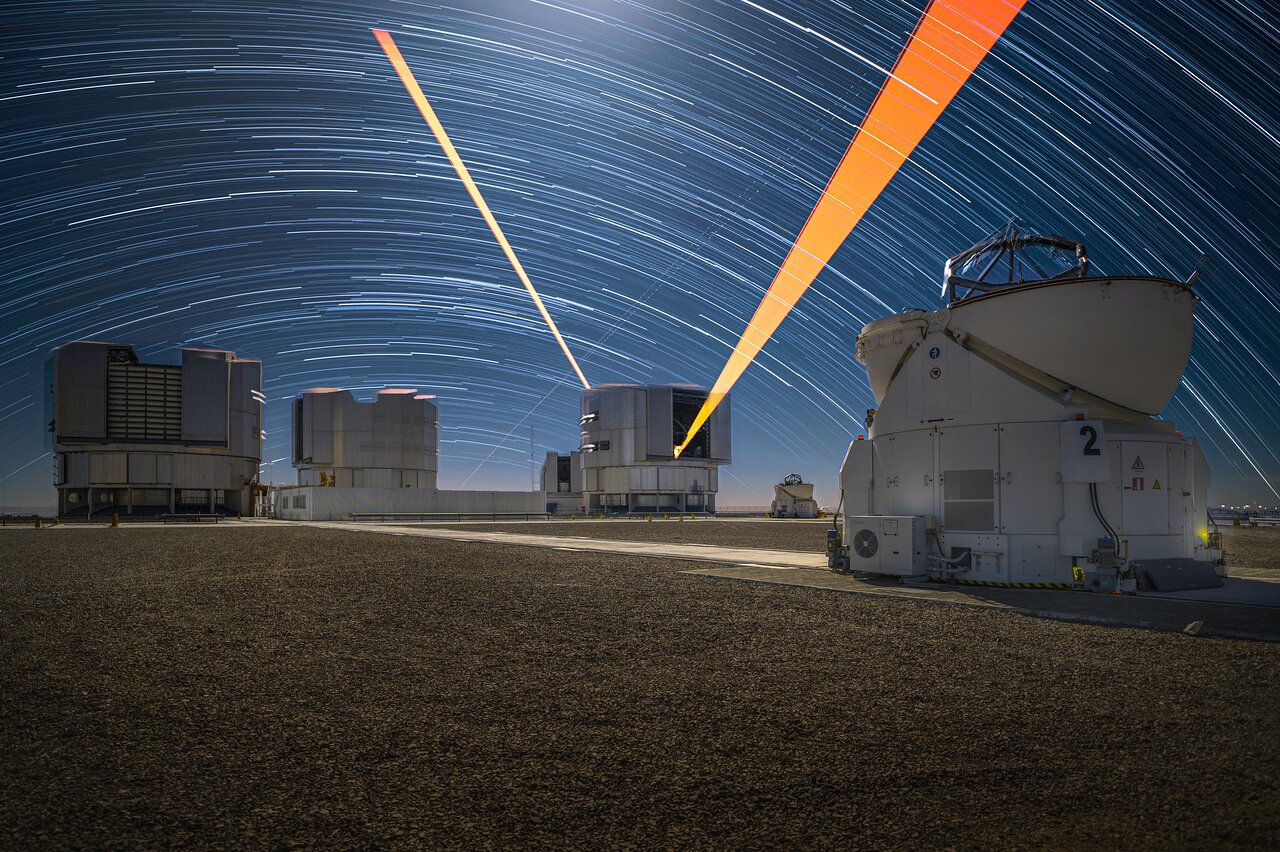Lasers cut through star trails in beautiful photo from the European Southern Observatory
In the new image, two laser beams are also seen decorating the night sky.

The European Southern Observatory (ESO) shared a beautiful new image of stars trailing across the night sky. It was taken at the ESO's Paranal Observatory, located in the Chilean Atacama Desert. The observatory is home to the Very Large Telescope (VLT), which consists of four Unit Telescopes and four smaller, movable Auxiliary Telescopes, like the one in the foreground of the image on the right.
Astronomers used a long exposure technique in which the night sky is photographed over several hours, capturing the movements of stars as they travel overhead. This creates a dazzling trailing effect, where starlight appears to arc over the observatory’s ground-based telescopes.
Two bright orange lasers are also seen beaming out of one of the Unit Telescopes. These laser beams, known as laser guide stars, are used to correct the distortion of starlight caused by Earth's turbulent atmosphere, according to a statement from the ESO. The beams are pointed in opposite directions because the long exposure technique took several hours to complete, during which the telescope moved to observe different targets in the sky, ESO officials said.
Related: Amazing space views of ESO's Very Large Telescope (photos)
A laser guide star creates an artificial star by shooting a laser beam into the sky, which excites sodium atoms in the upper layer of the atmosphere and causes them to glow like stars. This, in turn, provides a reference point for ground-based telescopes, enabling them to cancel out the effects of atmospheric turbulence and create a sharper image of the sky.
"Each laser delivers 22 watts of power — about 4000 times the maximum allowed for a laser pointer — in a beam that’s about 30 centimeters in diameter," ESO officials said in the statement. "This remarkable display doesn’t just look pretty: the twinkling of these artificial stars is measured in real time and used by the adaptive optics system to correct for the blurring caused by the Earth's atmosphere so that the telescope can create sharp images."
When we look up at the night sky, we see stars as individual points of twinkling light. However, the new image of the star trails over ESO's Paranal Observatory remind us of Earth's constant rotation, or spin, around its axis. Long exposure images such as this capture the beautiful motion of the sky as the Earth rotates relative to the backdrop of stars.
Breaking space news, the latest updates on rocket launches, skywatching events and more!

Samantha Mathewson joined Space.com as an intern in the summer of 2016. She received a B.A. in Journalism and Environmental Science at the University of New Haven, in Connecticut. Previously, her work has been published in Nature World News. When not writing or reading about science, Samantha enjoys traveling to new places and taking photos! You can follow her on Twitter @Sam_Ashley13.
